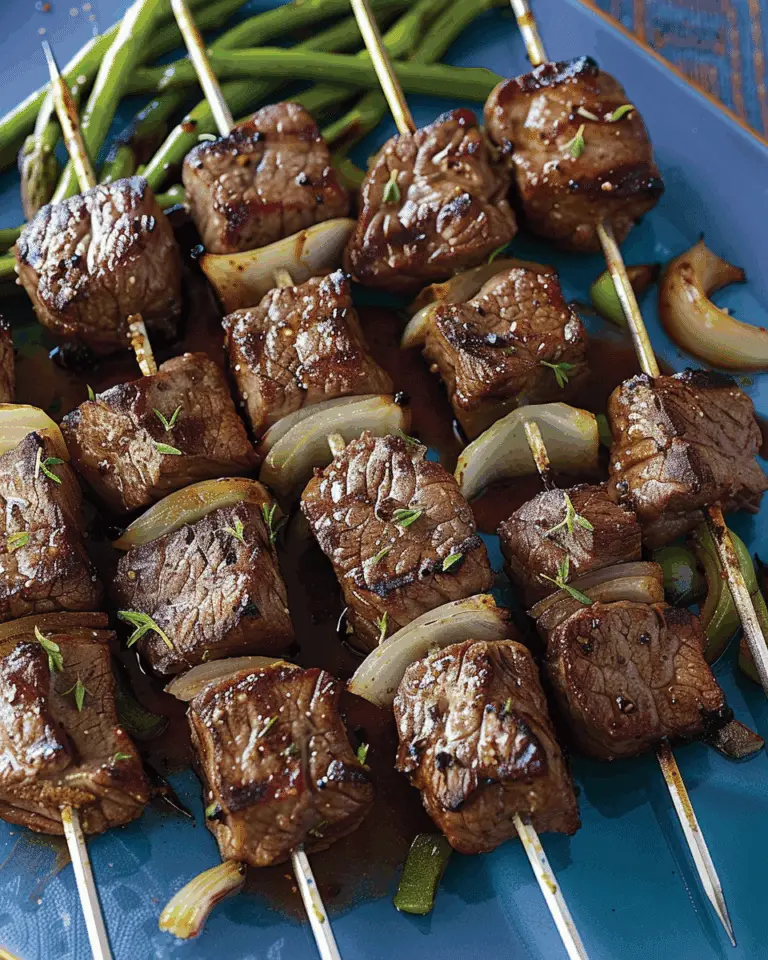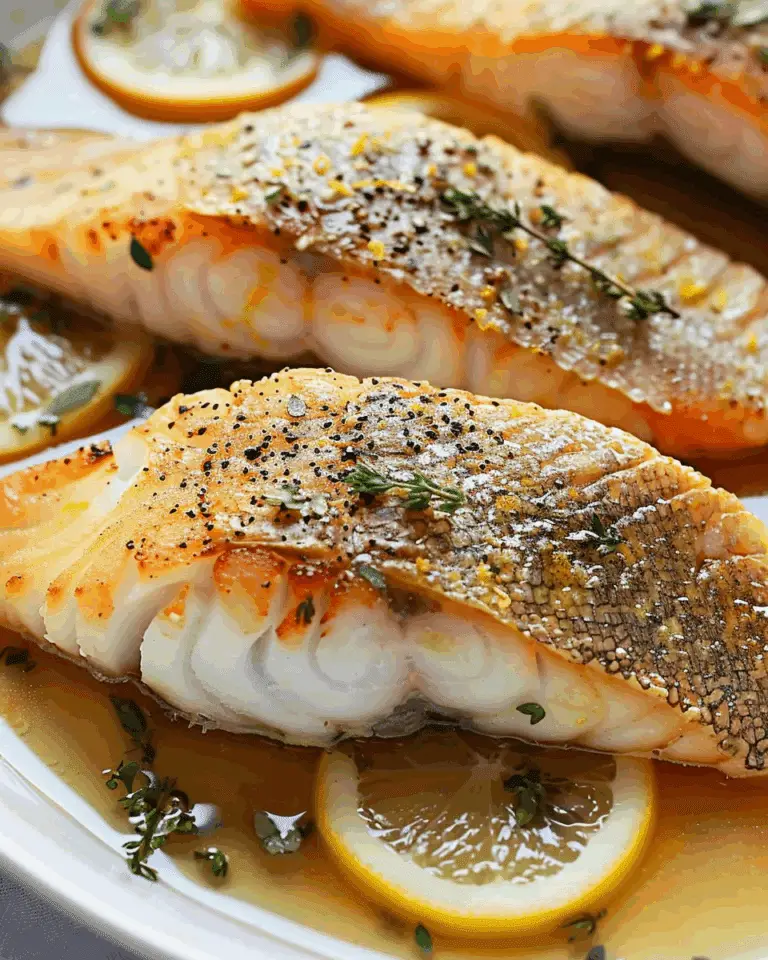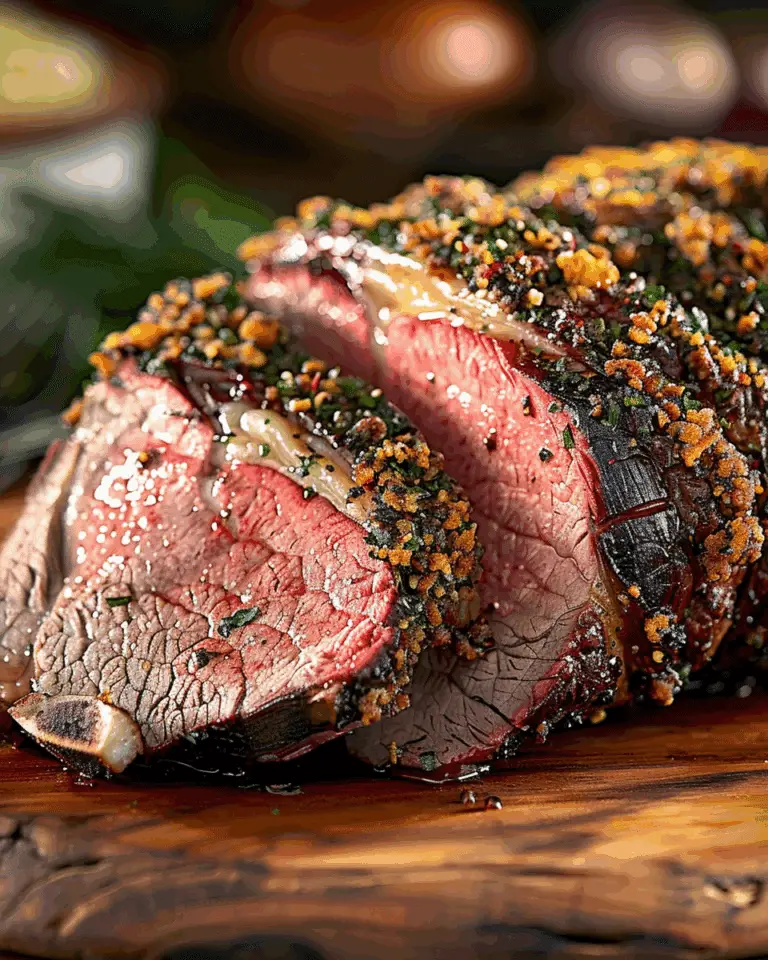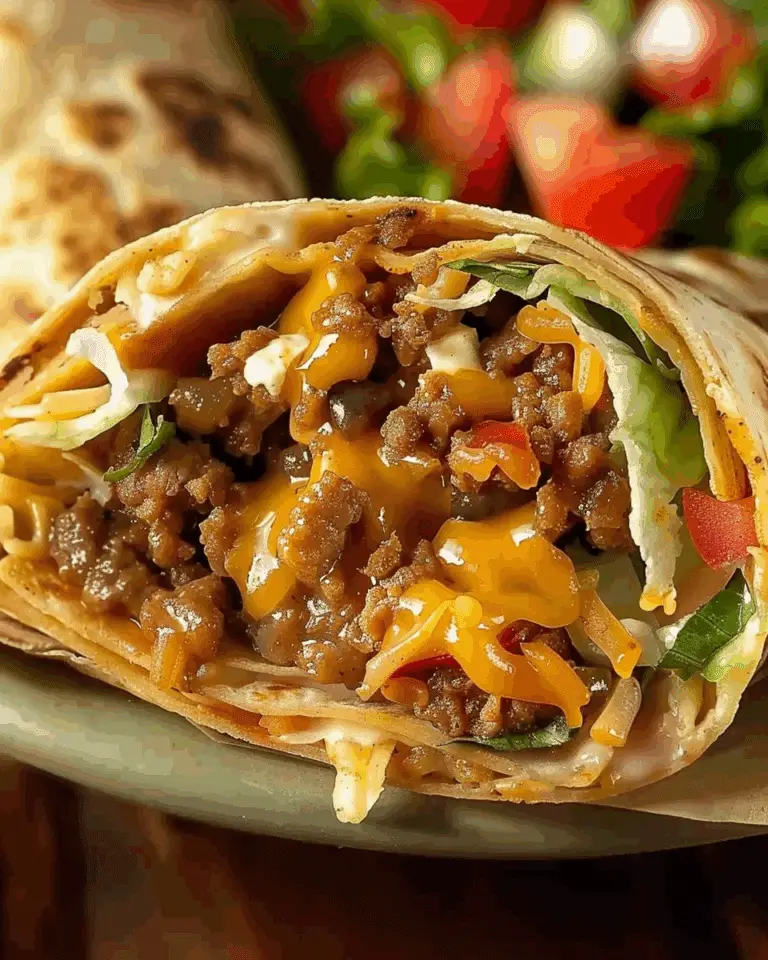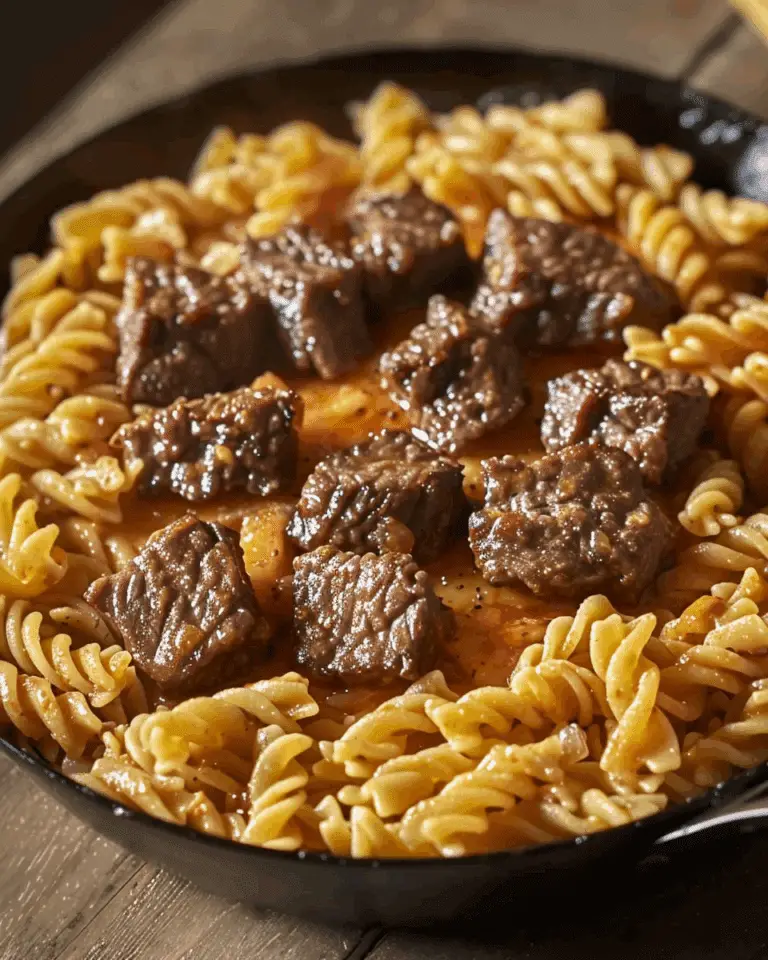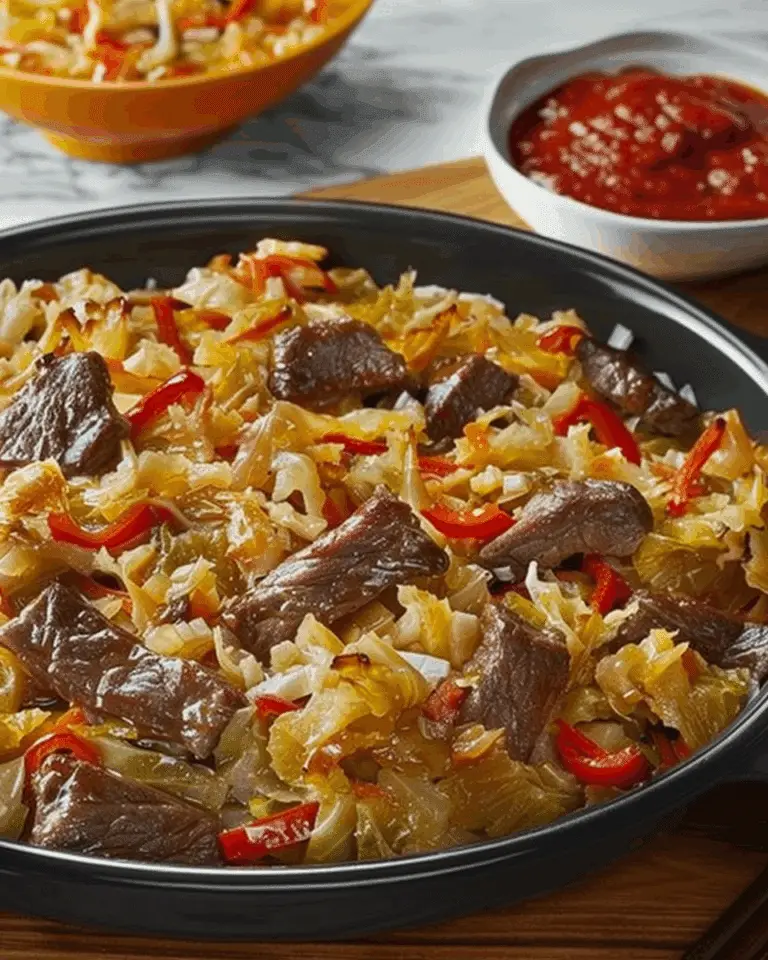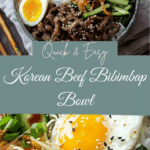There’s something so comforting about a Korean Beef Bibimbap Bowl. I love how it combines vibrant vegetables, tender beef, fluffy rice, and a perfectly runny egg into one harmonious dish. Every bite feels warm, balanced, and deeply satisfying, especially when I mix everything together with a spoonful of gochujang.
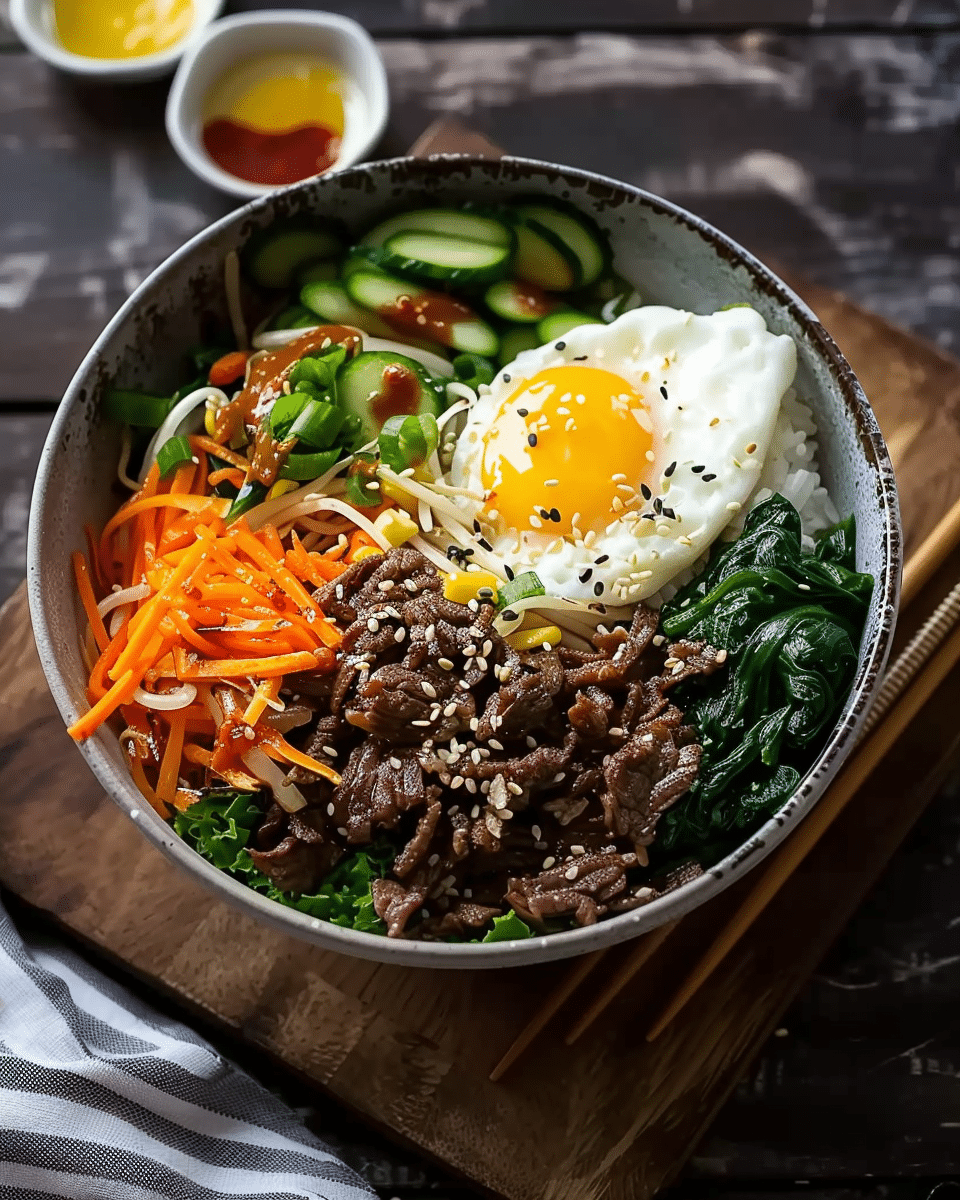
Why You’ll Love This Recipe
I like this recipe because it gives me a complete meal in one bowl—protein, veggies, and carbs in perfect balance. I can easily switch up the vegetables depending on what I have on hand, and the gochujang adds just the right amount of heat and umami. The best part is that it looks gourmet, but it’s surprisingly easy to make at home.
Ingredients
(Here’s a tip: Check out the full list of ingredients and measurements in the recipe card below.)
For the Korean Beef:
-
1 lb ground beef
-
3 tablespoons soy sauce
-
1 tablespoon sesame oil
-
1 tablespoon brown sugar
-
2 cloves garlic, minced
-
1 teaspoon grated ginger
-
1 teaspoon gochujang (Korean chili paste)
-
1 teaspoon sesame seeds
For the Bibimbap Bowl:
-
4 cups cooked white rice (short grain preferred)
-
1 cup julienned carrots
-
1 cup bean sprouts
-
1 zucchini, julienned
-
1 cup spinach
-
1 cup shiitake mushrooms, sliced
-
4 eggs
-
2 teaspoons sesame oil (for veggies)
-
Gochujang (for serving)
-
Sesame seeds and green onions, for garnish
Directions
-
Cook the rice and keep it warm. Short grain white rice gives the best texture.
-
In a skillet, brown the ground beef. Stir in soy sauce, sesame oil, brown sugar, garlic, ginger, and gochujang. Let it cook until fragrant and slightly thickened. Sprinkle sesame seeds and set aside.
-
In a separate pan, sauté each vegetable individually with a touch of sesame oil until tender but still vibrant.
-
For the spinach, I either lightly sauté it or blanch it briefly in boiling water, then squeeze out excess moisture and season with salt.
-
Fry the eggs sunny-side-up so the yolks stay runny.
-
Assemble the bowls: divide rice into four bowls, arrange beef and vegetables neatly around, then place the egg in the center. Garnish with sesame seeds, green onions, and a drizzle of gochujang.
Servings and timing
This recipe makes 4 servings. It takes about 20 minutes to prep and 20 minutes to cook, so I usually have it on the table in about 40 minutes.
Variations
Sometimes I swap the beef for mushrooms or tofu when I want a vegetarian version. I’ve also tried using brown rice instead of white, which adds a nutty flavor and extra fiber. For extra crunch, I like using a hot stone bowl (dolsot) to get crispy rice on the bottom.
Storage/Reheating
I store leftover rice, beef, and veggies in separate airtight containers in the fridge for up to 3 days. When I reheat, I warm the rice and beef in the microwave or on the stovetop, then quickly sauté the veggies again if I want them fresher. I always fry a fresh egg before serving to keep that creamy texture.
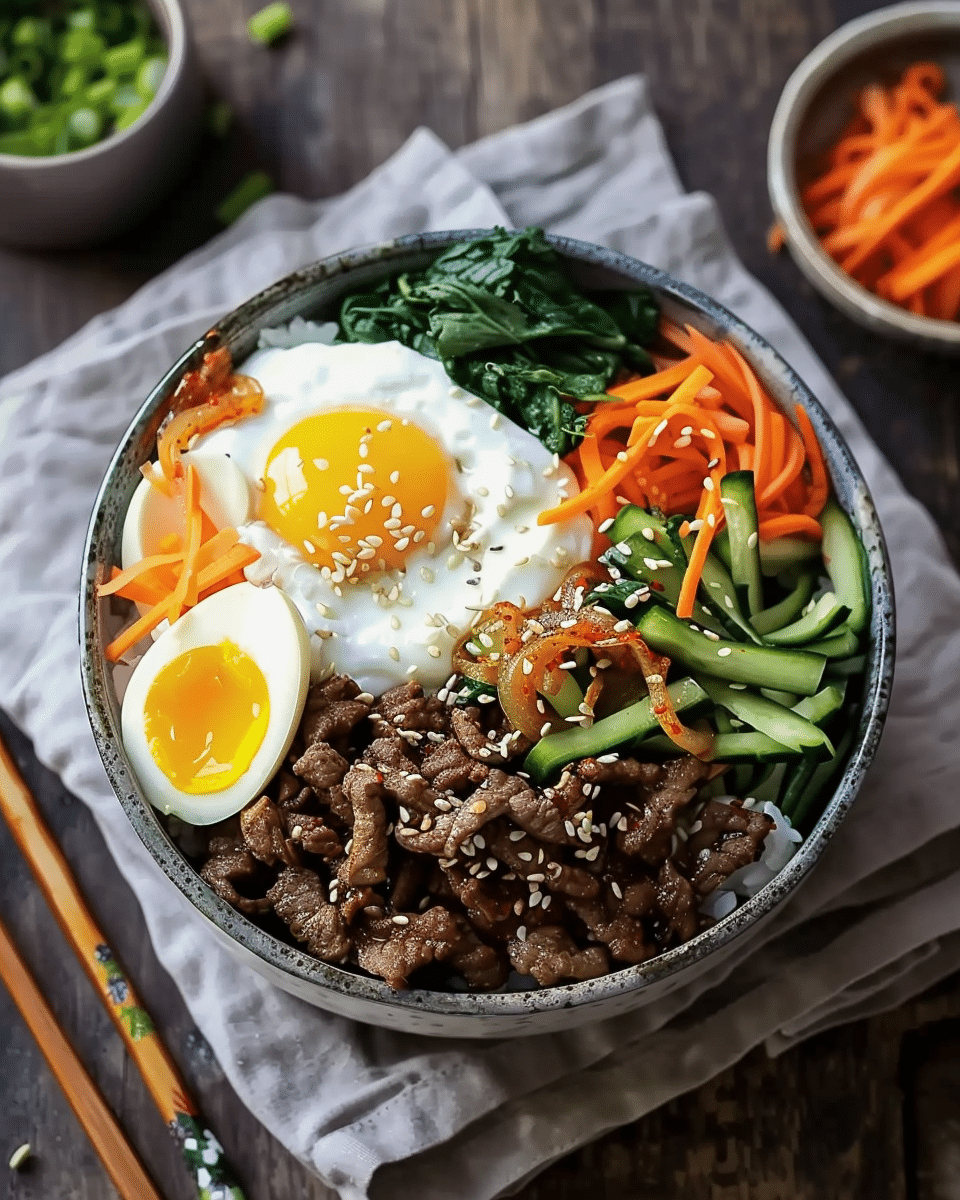
FAQs
Can I make bibimbap vegetarian?
Yes, I replace the beef with tofu or mushrooms and use tamari instead of soy sauce if I want it gluten-free.
Is bibimbap spicy?
The base of the dish isn’t spicy—it’s the gochujang that brings heat. I adjust the amount depending on how much spice I want.
Can I prepare the ingredients ahead of time?
Absolutely. I like cooking the beef and prepping the vegetables in advance. When it’s time to eat, I just reheat and assemble.
Do I have to use short grain rice?
No, but I prefer short grain rice because it’s stickier and holds everything together. Brown rice or jasmine rice also works if that’s what I have.
How do I get crispy rice like in a restaurant?
I use a dolsot (hot stone bowl) brushed with sesame oil before adding the rice. As it heats, the bottom layer turns crispy and golden.
Conclusion
Making a Korean Beef Bibimbap Bowl at home is like creating a little masterpiece in a bowl. I love how every bite is different—sometimes rich with beef, sometimes crisp with vegetables, always tied together by the egg and gochujang. It’s colorful, flavorful, and endlessly customizable, making it a dish I can turn to any night of the week.
Print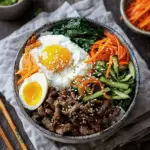
Korean Beef Bibimbap Bowl
- Total Time: 40 minutes
- Yield: 4 servings
Description
This Korean Beef Bibimbap Bowl features flavorful ground beef, sautéed vegetables, fluffy rice, and a runny egg, all topped with spicy gochujang. It’s a balanced, comforting, and customizable meal that’s as beautiful as it is delicious.
Ingredients
- For the Korean Beef:
- 1 lb ground beef
- 3 tbsp soy sauce
- 1 tbsp sesame oil
- 1 tbsp brown sugar
- 2 cloves garlic, minced
- 1 tsp grated ginger
- 1 tsp gochujang (Korean chili paste)
- 1 tsp sesame seeds
- For the Bibimbap Bowl:
- 4 cups cooked white rice (short grain preferred)
- 1 cup julienned carrots
- 1 cup bean sprouts
- 1 zucchini, julienned
- 1 cup spinach
- 1 cup shiitake mushrooms, sliced
- 4 eggs
- 2 tsp sesame oil (for sautéing veggies)
- Gochujang (for serving)
- Sesame seeds and green onions, for garnish
Instructions
- Cook the rice according to package instructions and keep warm.
- In a skillet over medium heat, brown the ground beef. Add soy sauce, sesame oil, brown sugar, garlic, ginger, and gochujang. Cook until beef is well coated and fragrant. Sprinkle sesame seeds and set aside.
- In another skillet, sauté carrots, zucchini, mushrooms, and bean sprouts individually with a little sesame oil. Cook until tender but still vibrant.
- For spinach, either blanch or lightly sauté. Squeeze out moisture and season with salt.
- Fry the eggs sunny-side-up, keeping yolks runny.
- Assemble bowls: Add rice as the base. Arrange beef and veggies around the rice. Top with a fried egg in the center. Garnish with sesame seeds, green onions, and a drizzle of gochujang.
Notes
- Use tofu or mushrooms instead of beef for a vegetarian version.
- Short grain rice works best, but jasmine or brown rice can be used.
- To make crispy-bottomed rice, use a preheated stone bowl brushed with sesame oil.
- Adjust gochujang to control spiciness.
- Prep Time: 20 minutes
- Cook Time: 20 minutes
- Category: Main Course
- Method: Stovetop
- Cuisine: Korean
Nutrition
- Serving Size: 1 bowl
- Calories: 560
- Sugar: 6g
- Sodium: 980mg
- Fat: 26g
- Saturated Fat: 7g
- Unsaturated Fat: 16g
- Trans Fat: 0g
- Carbohydrates: 50g
- Fiber: 4g
- Protein: 30g
- Cholesterol: 220mg

